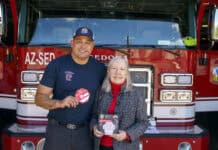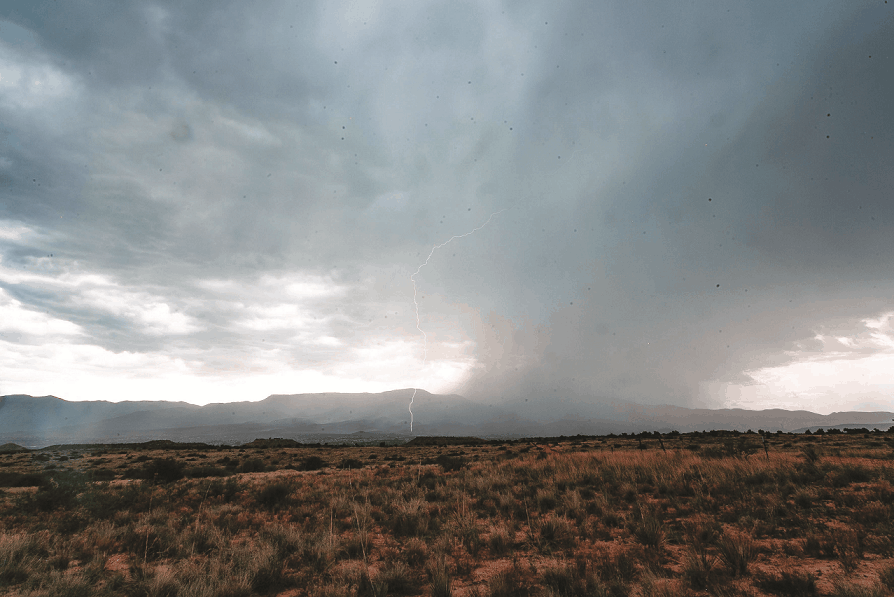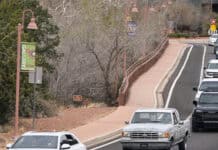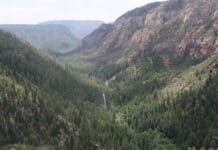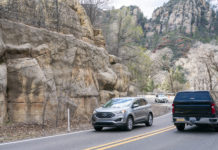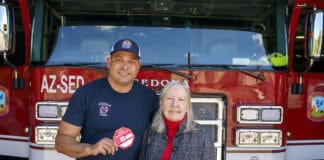Arizona’s monsoon season may be starting late this year, but that doesn’t mean it will be any less fierce. With any monsoon season comes higher humidity, which can lead to thunderstorms, heavy rain, lightning, hail, high winds, flash flooding, dust storms and extreme heat.
ADOT urges drivers to be prepared for summer storms by following these Monsoon safety driving tips:
- Expect the unexpected. Have extra supplies, including a fully charged cell phone, drinking water and an emergency kit in case you experience an extended highway closure.
- When in doubt, wait it out! If you see a dust storm or heavy rain ahead, it’s best to exit and wait for the storm to move through the area. Get to a safe area as far off the roadway as possible.
- When faced with low or zero-visibility conditions, pull your vehicle off the road as far to the right as possible. Turn off your lights, set the parking brake, and take your foot off the brake pedal. These steps reduce the chances that other drivers mistake your vehicle as the one to follow.
- Don’t risk crossing a flooded wash, even if it doesn’t look deep. Water is a powerful force that should not be underestimated. Even a few inches of running water poses a serious risk.
- Do not drive around “Road Closed” signs. You risk your life and face being cited under the state’s Stupid Motorist law.
- If traffic lights are out, treat an intersection just like a four-way stop.
- Storm runoff can loosen boulders and rocks on slopes above highways. Stay alert in areas prone to falling rocks.
Although much of Arizona is known for having an arid climate, the monsoon season can produce thunderstorms with sudden, heavy rainfall. Keep these tips in mind:
- Before you drive, inspect your windshield wipers, and replace them if necessary.
- Turn on your headlights while driving.
- Reduce your speed and maintain a safe distance between your vehicle and the one in front of you; create a “space cushion.”
- Avoid sudden braking, which can cause you to slide on the wet pavement. To slow down, take your foot off the gas pedal and brake slowly.
- Avoid areas where water is pooling in travel lanes; if possible, use center lanes and drive in the tracks of the vehicle ahead of you.
- The tires of larger vehicles, like trucks and buses, create spray that can lessen visibility so don’t follow them too closely.
- Be cautious of hydroplaning. This occurs when a thin layer of water accumulates between your tires and the asphalt and your vehicle loses contact with the roadway. If you feel you are hydroplaning, ease your foot off the gas pedal until you regain traction. Do not brake suddenly. If you are sliding or drifting, gently turn your steering wheel in the direction of your slide.
For highway conditions across Arizona, visit az511.
Advertisement


